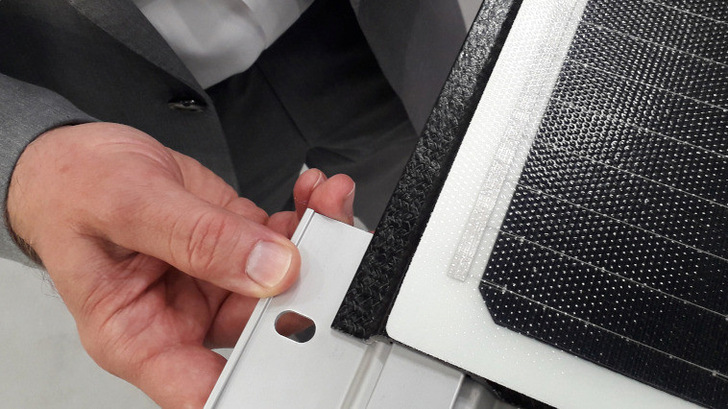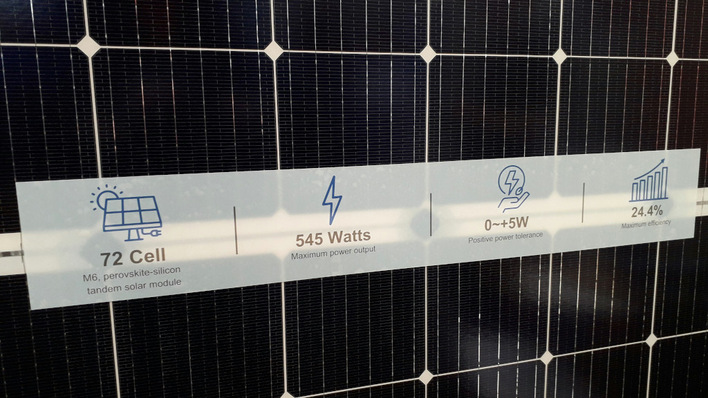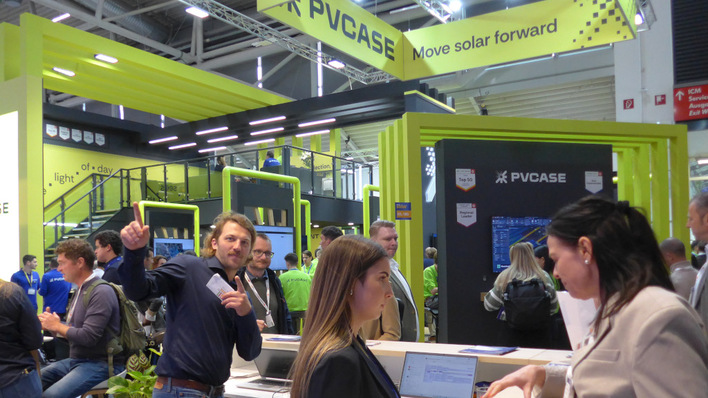Perovskite-based solar cells are seen as a highly promising technology in the solar industry, with the potential to achieve higher efficiencies and reduce costs compared to traditional silicon-based cells. However, despite over a decade of research, progress has been slow, with only a few companies advancing beyond small-scale laboratory cells. As the technology develops, researchers are grappling with its complexity and the challenges associated with scaling it for mass production.
Read more in the first part of this series: Trends and Technologies at The smarter E Europe
Complex minerals
As solar semiconductors, perovskites belong to the so-called compound semiconductors, which includes CIGS and cadmium telluride. Strictly speaking, these are organometallic thin-film cells. As a material, it is far more complex than crystalline silicon. The mineral itself contains methylammonium lead iodide, i.e. a hybrid of organic methylammonium and lead iodide, which is inorganic. There is now a very large family of perovskites, which also includes purely inorganic materials such as caesium lead iodide.
Broad band gap
Perovskite cells have a particularly large band gap, which is significant because it allows them to efficiently absorb and convert visible and ultraviolet light (which has higher energy and shorter wavelengths). This can potentially lead to better performance by increasing the voltage generated by the solar cell. Silicon, on the other hand, has a fixed and rather small band gap and doesn't capture visible light as effectively.
More in the latest module developments in the second part of this series: The smarter E: TOPCon and BackContact dominate trends
Higher voltages, lower currents
This performance means that the electrical voltages from perovskite cells are higher than from silicon cells, although electrical currents are lower. Modules featuring these novel cells are not yet available for mass production, but a trend can be identified, namely the stacking of perovskites in tandem cells or triple cells with amorphous or micromorphous silicon, cadmium telluride or CIGS. Crystalline silicon is generally used as the substrate for the photoactive layer, with a finished solar cell that is less than one micrometre thick, highlighting the major challenge facing the industry in taking these delicate laboratory cells and turning them into marketable solar modules.
Stability a sticking point
In laboratory tests, mini modules with perovskite cells (without silicon substrate) exhibited a relatively sharp drop in performance of up to 45 percent within the first few days in the field. After two months a certain degree of stabilisation sets in, but stronger solar radiation and higher temperatures are known to accelerate losses in output and yield.
A further challenge is the stability of coatings with metal-organic solar cells. Experience with CIS or cadmium telluride has shown that thin-film modules do not easily endure for 20 or 30 years. Passivation of interfaces is decisive for the performance of perovskites, which require tiny admixtures of lead in order to exhibit adequate stability over time. If they can be reliably stabilised, the minerals could supply clean electricity for decades, even in the face of high UV radiation and other environmental influences.
Promising results
The efficiencies of conventional silicon cells in the laboratory setting have been impressive, reaching as high as 34 percent – that‘s a third of the energy in sunlight converted into usable energy. By way of contrast, the theoretical efficiency of silicon-perovskite cells is by some estimates just under 43 percent, which would be an absolute game changer for the solar industry. In the world outside of the laboratory, the question of whether factories are indeed capable of manufacturing practicable solar modules on the basis of perovskites will be the decisive factor for the energy transition and for hoped-for lower costs.
Read more in the third part of this series – The smarter E: Confronting the limits of silicon
Prototypes completed
The “first” perovskite module, comprising 72 cells (M6) and offering an impressive output of 545 watts, was presented in Munich last year by Oxford-PV from Brandenburg an der Havel. Its efficiency was stated as 24.4 percent – far from hypothetical claims.
All things considered, it seems safe to say that it will be some time before tandem modules of silicon and perovskite will be truly marketable. Nevertheless, interesting prototypes will be on display this year again in Munich – the scientists and engineers have been hard at work, after all, and have findings to share. And in the years ahead, we can be confident of continued innovation. (HS/TF)
Subscribe to the pv Europe newsletter for regular news and information









